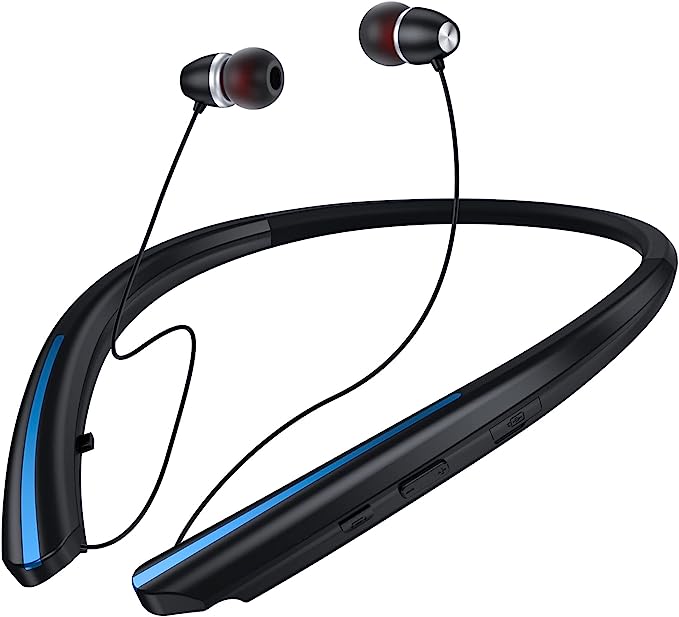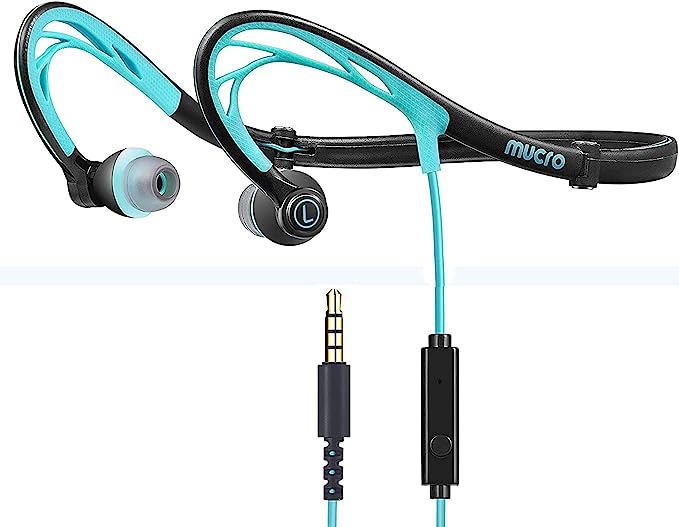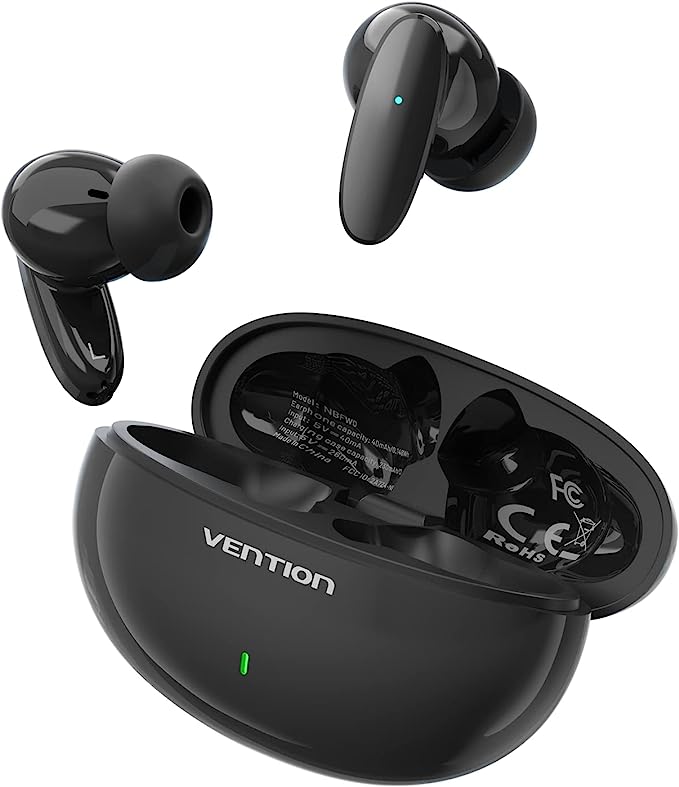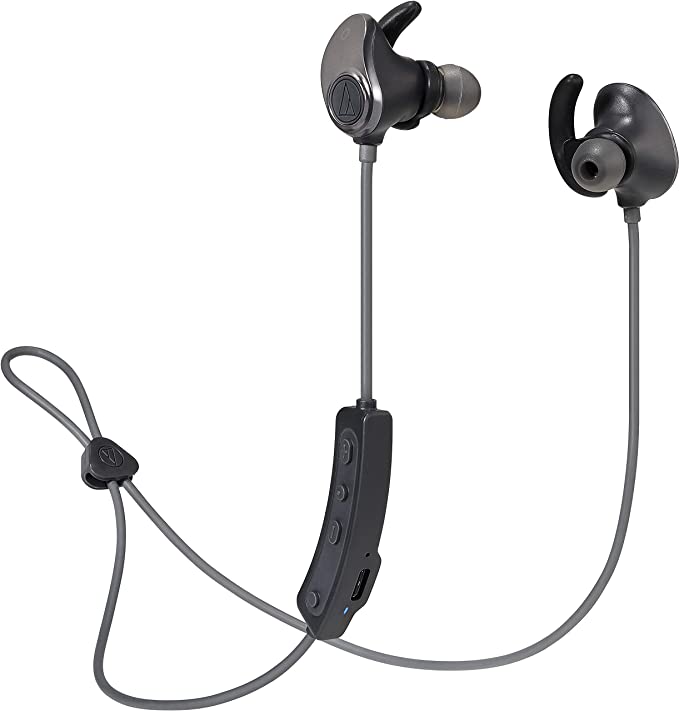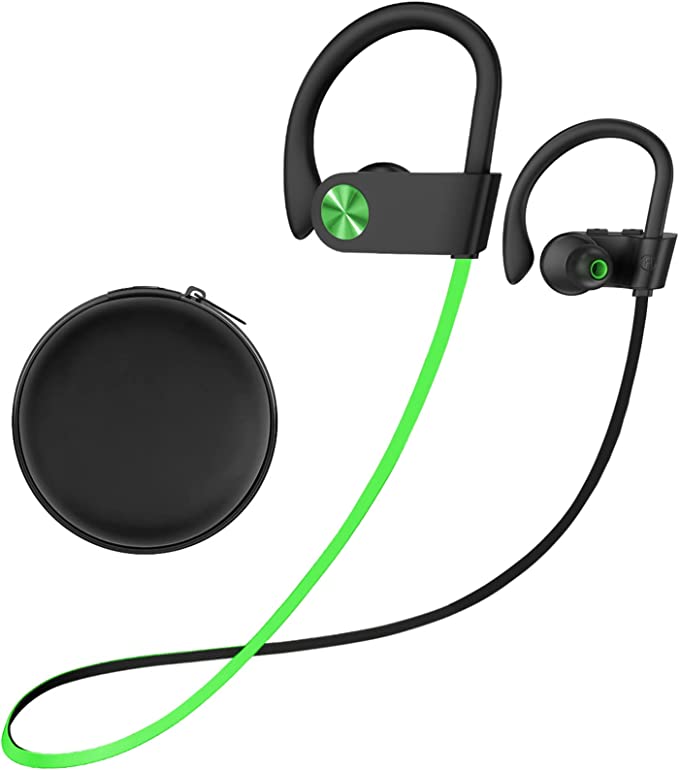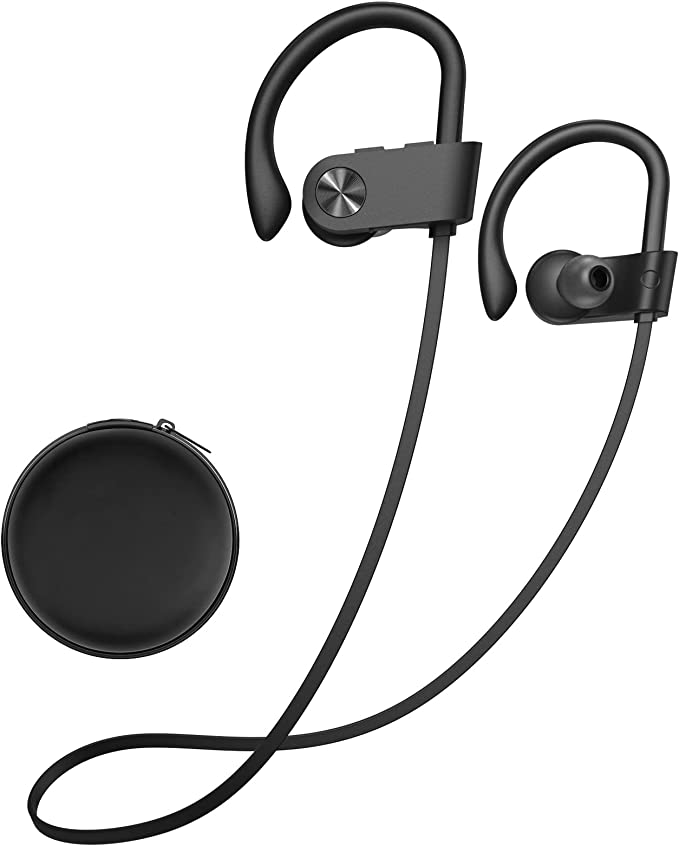MUCRO MB-232 Wired Earbuds: The Science Behind Secure Fit and Sweatproof Design for Your Workout
Update on May 15, 2025, 3:05 p.m.
Imagine this: you’re on a run, heart pounding in rhythm with your feet, the city dissolving into a blur. Your favorite track kicks in, a surge of energy courses through you… and then, disaster. An earbud, slick with sweat, makes a desperate dive for the pavement. Or perhaps it’s the crackle of a dying battery, or the muffled sound from a once-crisp driver, now a casualty of your last intense workout. For anyone who relies on music or podcasts to power through physical exertion, these are familiar frustrations in the quest for the perfect audio companion.
Enter the MUCRO MB-232 wired sport earbuds, described as featuring “Over Ear Hooks,” a “Sweatproof” design, and an “In Ear” form factor. While specific performance data beyond the provided product listing isn’t available for this particular model, its listed attributes offer us a fantastic opportunity—a tangible example through which we can delve into the fascinating interplay of ergonomics, material science, and acoustic engineering that defines effective sports audio gear. What alchemy, then, transforms simple listening devices into steadfast allies for our most demanding physical endeavors? Let’s tune in and explore.

A Brief Overture: The Evolution of Ears in Motion
Before we dissect specific features, it’s worth appreciating how far we’ve come. The journey of audio gear for active individuals is a miniature epic of innovation. Cast your mind back, perhaps to images of early joggers with bulky, headband-style headphones, precariously balanced. Or recall the Walkman era, where foam-covered earpieces offered a first taste of portable, personal sound, albeit with a tendency to slip and slide with vigorous movement.
The demands of sport – relentless motion, the presence of sweat, the need for a secure yet comfortable fit – gradually sculpted a new category of audio equipment. Engineers and designers began to think less about just making sound portable, and more about making sound perform under duress. This led to the specialized features we often see today, such as those claimed by the MUCRO MB-232, each born from a desire to solve a very real problem faced by athletes and fitness enthusiasts worldwide.

The Unyielding Embrace: Decoding the Over-Ear Hook
One of the most common grievances with earphones during exercise is their propensity to dislodge. Whether you’re bounding through a trail run, executing explosive movements in a HIIT class, or simply caught in the rhythm of a fast-paced jog, the tyranny of gravity combined with a bobbing head can send an ill-fitting earbud flying. The MUCRO MB-232 product description highlights “Over Ear Hooks” as a primary feature to combat this. But what makes this simple loop of material so effective?
The science is a beautiful marriage of anatomy and engineering. Your outer ear, the pinna, with its intricate landscape of curves and hollows like the concha (the bowl-shaped part) and the antihelix (the curved ridge inside the outer rim), provides natural anchoring points. An over-ear hook is designed to intelligently leverage these structures. It doesn’t just hang there; it often gently cradles the top and back of the ear, distributing the earbud’s (usually minimal) weight over a larger area. This distribution is key not only for stability but also for comfort during extended wear, preventing pressure points that might arise if all the support relied on the ear canal alone.
Consider the physics of fit. An effective ear hook acts much like a perfectly balanced cantilever or a well-designed backpack harness. When you move, your body generates forces in multiple directions. The hook provides a counter-force, a gentle but firm resistance that keeps the earbud unit securely in place. It effectively raises the “dislodgement threshold,” meaning it takes a much more significant or awkward force to unseat the earphone. This allows for a greater range of motion and intensity in your workouts without the constant, distracting worry of an impending earbud escape.
While the concept seems straightforward, the design of an effective ear hook involves careful consideration of material flexibility, curvature, and length to accommodate a wide variety of ear shapes and sizes—a true exercise in ergonomic design. Though we don’t have specifics on the MB-232’s hook material or precise geometry, the inclusion of this feature speaks to a design intent focused on unwavering stability.
Historically, the idea of securing devices around the ear isn’t new. Early hearing aids and communication earpieces for professionals (like broadcasters or security personnel) often incorporated similar mechanisms out of sheer necessity. The innovation for sports audio has been in refining these concepts with lightweight, flexible, and sweat-resistant materials.
For the user, the reward is profound: the freedom of movement and the uninterrupted focus that comes from knowing your audio source is secure. It’s the confidence to lean into that sprint, to commit to that jump, knowing your soundtrack will stay with you. Imagine a CrossFit WOD (Workout of the Day) involving box jumps, burpees, and double-unders; a secure over-ear hook system is almost a prerequisite for maintaining sanity and rhythm.

Crafting Your Cone of Silence (and Sound): The In-Ear Form Factor
Once stability is addressed, the next challenge is often managing the auditory environment. The world is a cacophony, especially in shared spaces like gyms or busy urban running paths. Your meticulously curated playlist, designed to motivate or soothe, can easily be drowned out or diluted. The MUCRO MB-232 listing specifies an “In Ear Form Factor,” a design that aims to bring your audio to the forefront.
The primary scientific principle at play here is passive noise isolation, sometimes referred to as physical sound attenuation. Unlike active noise cancellation (ANC), which uses electronics and microphones to create “anti-noise,” passive isolation is achieved by creating a physical barrier. An in-ear earphone, by its very nature, uses an eartip (typically made of silicone or memory foam, though specifics for the MB-232 are unknown) to create a seal within your ear canal. This seal acts like a tiny, personalized sound booth, physically blocking a significant portion of ambient sound waves from reaching your eardrum.
The effectiveness of this seal is paramount. A good seal not only reduces external noise but also helps in directing the symphony of your chosen audio more efficiently. By containing the sound waves produced by the earphone’s driver and channeling them directly towards the eardrum, an in-ear design can often lead to a perception of richer bass, clearer mid-tones, and more detailed highs, even at lower volume levels. This is a crucial benefit, as it means you might not need to crank up the volume to overcome external noise, potentially safeguarding your hearing in the long run.
However, the in-ear design can be a double-edged sword, particularly for outdoor activities. While a “cone of silence” is great for focus in the gym, runners or cyclists on public roads need a degree of situational awareness for safety. They must be able to hear traffic, warnings, or other important environmental cues. This is where the degree of isolation and user discretion become important. Some in-ear designs are more occluding than others, and some users might choose to wear only one earbud in certain situations.
For the MUCRO MB-232, the “In Ear” descriptor suggests an aim for this immersive experience. The user reward is clear: a more personal and focused audio bubble, allowing the intricacies of music or the nuances of a podcast to shine through, even amidst the clang of weights or the hum of treadmills. Picture a powerlifter mentally preparing for a heavy lift in a bustling gym; the in-ear design helps them retreat into their zone, their focus sharpened by their chosen audio track.
The Sweatproof Shield: Defying the Elements Within
Exercise and sweat are inextricably linked. And for electronics, sweat is a formidable foe. It’s not just water; sweat is a saline solution, making it conductive and corrosive. Over time, it can wreak havoc on the delicate internal components of earbuds, leading to crackling sound, intermittent connections, or complete failure. The claim of “Sweatproof” for a product like the MUCRO MB-232 is, therefore, a vital one for any active user.
What does “sweatproof” generally entail from a material science and design perspective? While the provided information for the MB-232 doesn’t specify an Ingress Protection (IP) rating – the industry standard (e.g., IPX4, IPX7) that quantifies an enclosure’s resistance to moisture and solids – the term itself implies several protective strategies:
- Material Alchemy: Engineers often select polymers (plastics) and synthetic rubbers for the earbud housing and cable that are inherently resistant to moisture and the corrosive salts found in sweat. Think of materials that don’t readily absorb water or degrade when exposed to an acidic or alkaline environment (sweat pH can vary). Furthermore, internal components, especially the sensitive driver unit and circuit board, might receive a hydrophobic nano-coating. These ultra-thin coatings work at a molecular level to repel water, causing droplets to bead up and roll off, much like water on a lotus leaf or a freshly waxed car.
- Sealed Enclosures: The physical design of the earbud casing is critical. Minimizing gaps, using tight seams, and employing seals or gaskets around buttons, cable entry points, and driver enclosures are common tactics to prevent sweat ingress.
- Protecting the Vulnerable: Special attention is paid to safeguarding the most susceptible parts. The acoustic vents necessary for driver performance, for instance, might be covered with a fine, acoustically transparent mesh that allows air and sound to pass but resists moisture droplets.
It’s important to approach the term “sweatproof” with a degree of understanding. Without a specific IPX rating, the exact level of protection can vary between products. Some might withstand light perspiration, while others are designed for more intense, prolonged exposure. Nevertheless, any design consideration given to moisture resistance, as implied by the “Sweatproof” claim for the MUCRO MB-232, is a significant step towards enhanced durability and reliability for fitness enthusiasts.
The journey of making portable electronics rugged enough for active lifestyles is ongoing. From early water-resistant watches to today’s highly specialized sports gadgets, the battle against the elements (both external and internal, like sweat) has spurred considerable innovation in materials science and micro-engineering.
The user reward here is multifaceted: increased durability means your investment lasts longer; enhanced reliability ensures your audio won’t cut out mid-session; and there’s also a hygiene factor, as materials designed to resist sweat are often easier to clean. Imagine finishing a grueling summer marathon, drenched from head to toe. The peace of mind knowing your earphones are built to handle such conditions is invaluable.

The Unbroken Cord: Reliability in a Wireless World
In an era dominated by Bluetooth and true wireless stereo (TWS) earbuds, the MUCRO MB-232’s “Wired” connectivity, specifically mentioning a “3.5mm” size option, might seem anachronistic to some. Yet, for a significant segment of users, particularly in demanding environments like workouts, the humble wired connection retains a powerful, practical appeal.
What are the enduring scientific and practical advantages of this “unbroken cord”?
- Signal Integrity and Latency (General Principles): A physical, wired connection generally offers the most stable and direct path for an audio signal from the source device (phone, MP3 player) to the earbud drivers. This can translate to a potentially uncompressed audio signal, free from the digital compression artifacts that can sometimes occur with certain Bluetooth codecs. Furthermore, for applications where timing is critical (though less so for simple music playback during exercise), wired connections have virtually zero latency, unlike some wireless protocols which can introduce a slight delay.
- Zero Earbud Battery Drama: This is perhaps the most straightforward and cherished benefit for many. Wired earbuds draw their minuscule power requirements directly from the audio source. This means no worrying about whether your earbuds are charged before a workout, no risk of one earbud dying before the other, and no concerns about the long-term degradation of tiny lithium-ion batteries within the earbuds themselves.
- The Simplicity of the 3.5mm Jack: The 3.5mm TRRS (or TRS) connector is a marvel of enduring, battle-tested engineering. Its design allows for stereo audio and, often, microphone input in a compact, robust, and universally understood format. While many newer smartphones have controversially omitted this port, a vast ecosystem of devices still supports it, and adapters are readily available. For many, the plug-and-play simplicity is a welcome respite from pairing procedures, firmware updates, and compatibility quirks that can sometimes plague wireless devices.
- A Niche of Enduring Appreciation: For athletes who prioritize unwavering reliability, for audiophiles on a budget who appreciate the sound quality-to-price ratio that wired connections can offer, or simply for those who prefer a “no-fuss” approach, wired earbuds remain a compelling choice. They represent a technology that, for its intended purpose, simply works.
The MUCRO MB-232, by offering this wired 3.5mm option (priced at $18.99 according to the provided listing), caters to users who value these practicalities. It’s for the individual who wants to grab their gear and go, knowing their audio will be there for them, reliably and without fuss, from the first warmup stretch to the final cool-down.
The Ensemble Performance: How These Features Harmonize for the Active User
The true value of a well-designed sport earphone often lies not in a single standout feature, but in how multiple design considerations work in concert. For the MUCRO MB-232, based on its description, the over-ear hooks promise stability, the in-ear form factor aims for immersive sound and a secure seal, the “sweatproof” claim suggests durability against the rigors of exercise, and the wired connection offers straightforward reliability.
Together, these elements paint a picture of an audio tool designed to integrate seamlessly into an active routine. The security of the hooks means the benefits of the in-ear seal aren’t compromised by movement. The sweatproof construction aims to ensure that both the fit and the audio fidelity endure over time, workout after workout. And the wired connection provides a dependable audio stream without adding another device to the “must-charge” list.
The product listing mentions compatibility with “iPhone, iPod, Samsung” (implying broad usability with devices sporting a 3.5mm jack or via an adapter) and a customer rating of “3.8 out of 5 stars from 3,523 ratings.” While this rating is a general snapshot and doesn’t reveal specifics about why users rated it as such, it does indicate a substantial level of user interaction and a generally moderate reception in the marketplace, according to that single source of information.

Coda: Tuning into Your Needs – Beyond the Specs
Understanding the why behind the features of any piece of equipment, including sport earbuds like the MUCRO MB-232, empowers us as consumers. It allows us to look beyond marketing buzzwords and assess whether a product’s design truly aligns with our individual needs and the demands of our chosen activities. The principles of ergonomic stability, passive noise isolation, material resilience against moisture, and reliable signal transmission are not unique to any single brand or model; they are fundamental concepts in the pursuit of better sports audio.
The MUCRO MB-232, through its described features, serves as an accessible illustration of these concepts at play. The “best” audio gear is, of course, a deeply personal choice, influenced by activity type, ear anatomy, sound preferences, and budget. However, armed with a little knowledge of the underlying science and engineering, you are better equipped to make an informed decision.
Ultimately, the goal is to find that trusty audio companion that lets you lose yourself in the rhythm of your movement, the power of your music, or the intrigue of your podcast, with every beat clear, every word distinct, and every stride supported by an unseen symphony of thoughtful design.
